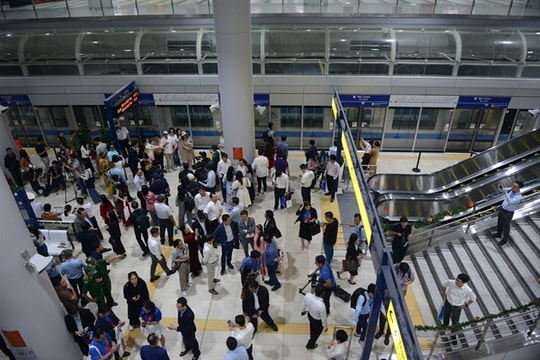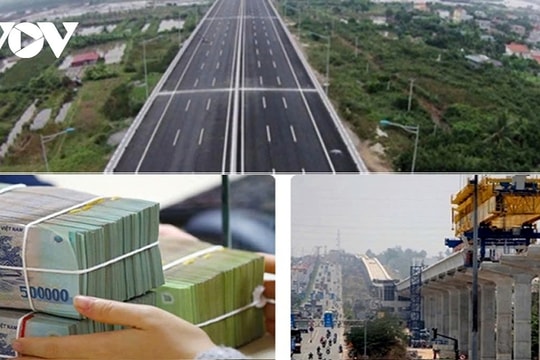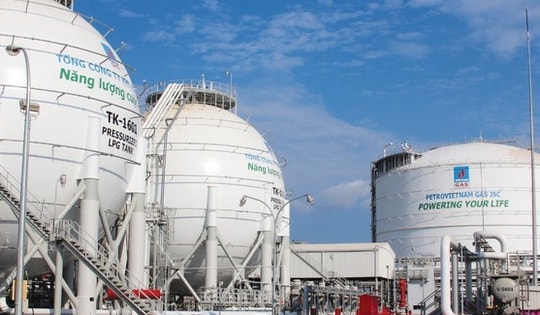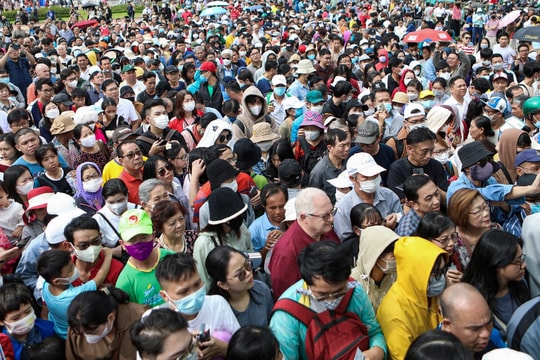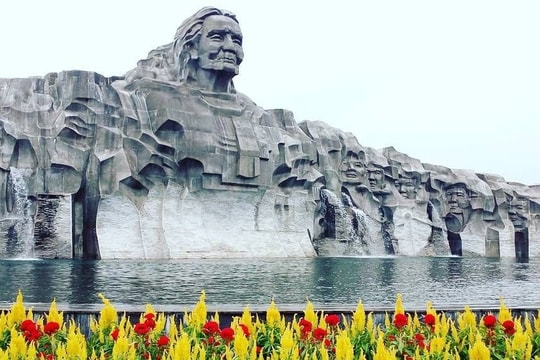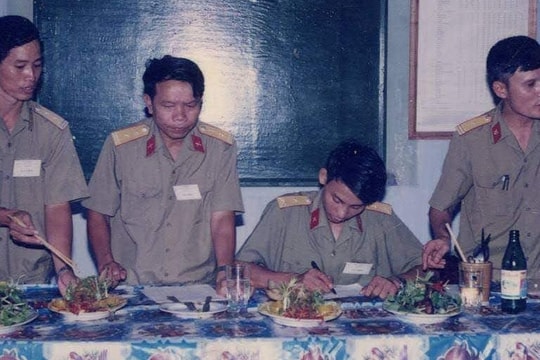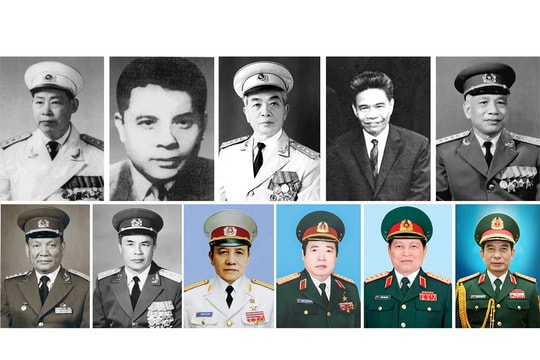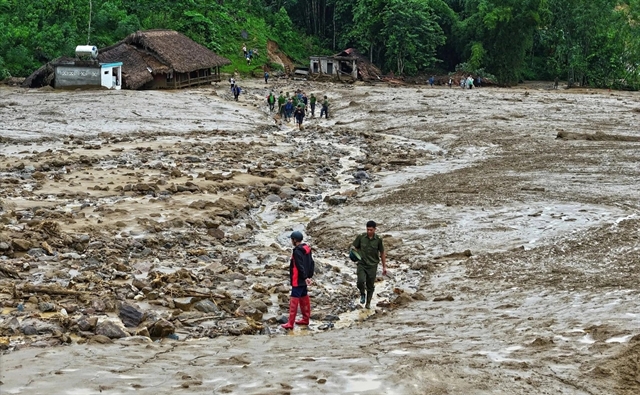 |
| A devastating flash flood buried 35 households in Bảo Yên District, Lào Cai Province.— Photo dantri.vn |
LÀO CAI — "I've lost everything. My mum, my wife and my children."
Survivor Hoàng Văn Thới wept bitterly as he spoke.
He was sheltering in a makeshift shelter in torrential rain in Làng Nủ Village, Phúc Khánh Commune, where a catastrophic flash flood buried all 35 households in Bảo Yên District, the northern mountainous province of Lào Cai.
He sat in stunned silence, cradling two small wooden coffins, where inside lay his one-year-old child and his two-year-old niece.
Nearby were the bodies of his wife, his mother and two of his children.
“They’re all gone. My wife, three children, my mother and my niece were all swept away by the flood. My home is destroyed as well.”
According to the latest report from Lào Cai Province’s authorities, by 8am on Wednesday, 22 people had been confirmed dead, with 17 injured, following the flash flood that struck Làng Nủ Village.
On Wednesday, rescue teams are urgently searching for 73 people still missing.
Thới recalled the Monday night when heavy rains fell on the village, causing water to surge in the stream running past his house.
Seeing the hill behind their home beginning to show signs of sliding, Thới decided to move his mother and children to his sister’s house on the other side of the stream.
"We believed my mother's safety and the children were more important, so we sent them to what seemed like the safer house," Thới said.
The house, which was considered 'safe' had 11 of Thới’s relatives inside. But by the time morning broke, Thới was horrified to find their shelter reduced to rubble.
He and his wife stayed at their house, but only he survived.
Hoàng Ngọc Diệp, the village head, another survivor, recounted the terrifying events of Tuesday morning.
Before the flash flood hit, the rain was relentless.
Around 6am, villagers heard a loud explosion and in a matter of seconds, the entire hill collapsed, burying the village.
 |
| Nguyễn Văn Hành, one of the lucky survivors after the destructive flash flood recently buried 35 households in Bảo Yên District, Lào Cai Province, is treated at the district's General Hospital. Photo baolaocai.vn |
Nguyễn Văn Hành, another resident of the village, was also one of the lucky survivors. He said that when the flood hit, he and his mother were holding hands, running from their house. She told him to keep running, but in the chaos, they got separated.
“As I reached the village bridge, the floodwater struck, sweeping me 20-30 metres away. Somehow, I managed to get up and crawl to a nearby house where I was rescued,” he said.
Another villager Nguyễn Văn Thinh said: “I am the only survivor in my family after the flood destroyed everything.”
At around 6am, his family was inside when they heard a massive crash.
“In seconds, the earth and debris came down, sweeping me away from my house by about 150m. I was buried in the mud but managed to survive.”
A local military official said that Con Voi Mountain was located above the village.
In the early hours of Tuesday, a large 'water pocket' accumulated on the mountain.
After two massive explosions, the pocket burst, sending torrents of water and mud down into the village.
The once vibrant area, home to five or six generations of villagers was destroyed, blanketed in mud and debris from the flood.
“No one could have predicted this,” one villager said.
Local residents told reporters that the area had never before experienced such a disaster, so the landslide caught everyone by complete surprise.
Chairman of the provincial People’s Committee Trịnh Xuân Trường added: “We never imagined the area would be hit by such a catastrophic landslide and flood.”
Race against time for rescue teams
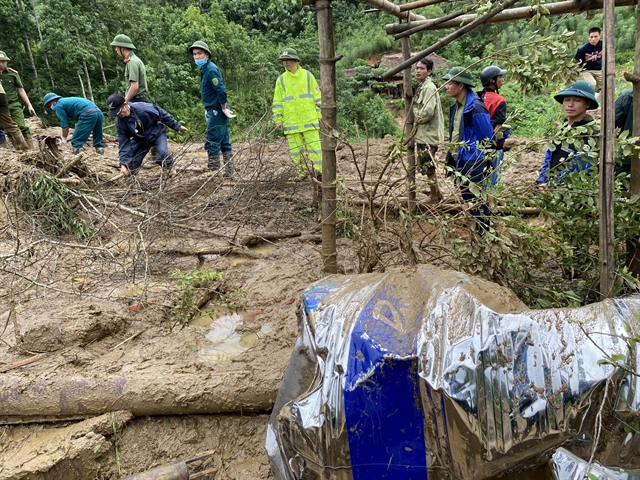 |
| Search and rescue forces search for victims of the devastating flash flood. —VNA/VNS Photo |
Although the location of the flood is far from the centre of the district, making operations extremely difficult due to cut-off roads and communication loss, the authorities have mobilised all available forces, racing against time to carry out rescue efforts.
On the scene, Trường instructed the district officials to assess the situation and ensure the well-being of the affected residents, prioritising the provision of food, water and shelter to those displaced.
He also said that the Military Region 2 would lead the search and rescue operations, while local authorities were mapping the area to better coordinate the search.
“The affected area is vast, so focused search efforts are challenging,” Trường said.
"We need to map out the swept-away households, counting the number of people in each one, so we can target the search."
Trường also emphasised ensuring the safety of the rescue teams on site.
The Military Region 2 has deployed 300 soldiers to the commune, with 100 soldiers searching along the Nủ Stream and 200 others focusing on the landslide area.
The operation is being directly commanded by Lieutenant General Phạm Hồng Chương and the province’s Party Secretary Đặng Xuân Phong.
Additionally, around 300 police, military and local volunteers are involved in search efforts, providing information, guiding and helping with logistics.
However, the search operation has encountered numerous challenges.
The entire area has been levelled by the flood, with only mud, debris and floodwater remaining. It is estimated that over one million cubic metres of mud has engulfed the area.
Rescue vehicles and equipment have yet to reach the site, while heavy rains persist, making conditions worse.
Phong, who has taken charge of the rescue mission since Wednesday morning, predicted that the search could take a week or more, given the difficulty of reaching the disaster area.
Discussing the option of using sniffer dogs, Phong expressed concerns that the victims may be buried five to seven metres deep, making it difficult even for trained dogs to detect them.
Colonel Nguyễn Đức Cương, political commissar of the province's Military Command, said that the priority was to continue search and rescue efforts and evacuate people from other high-risk landslide zones.
"The situation on the ground is extremely complicated, with over a million cubic metres of mud," he said.
They were employing both manual methods and water flushing techniques to look for survivors, however, the continuing rain was making conditions worse and the risk of further landslides remains high, he said.
Authorities are reassessing the geological situation to ensure the safety of the search teams, he said. — VNS




